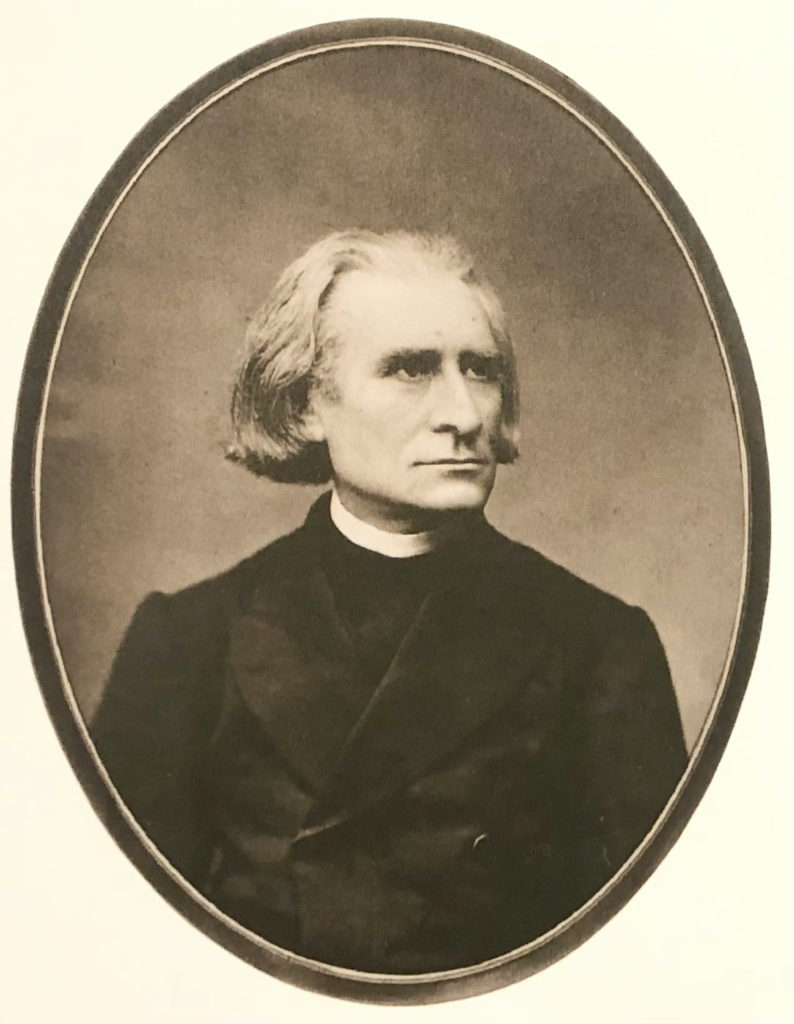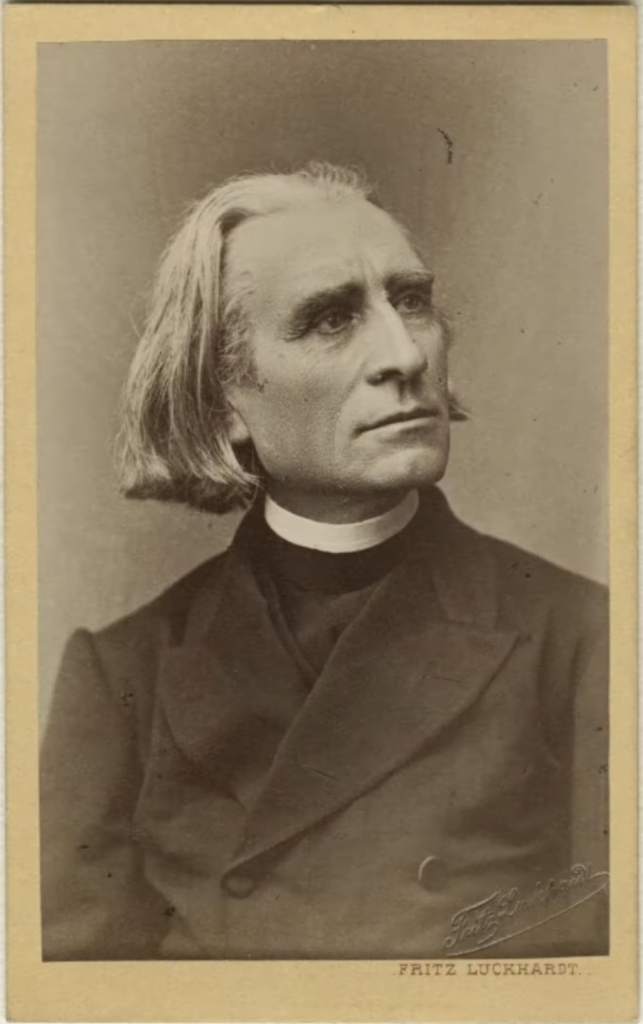Published on Franz Liszt Group, on October 24, 2021. If you want to know how the Story Behind series started, I give details in “Story Behind” Series #1″.
Portrait of Franz Liszt by Fritz Luckhardt in 1871.

In 1871, the photographer Fritz Luckhardt took a series of pictures of Liszt in Vienna. Here is the story behind these pictures.
From November 1870 to April 1871, following the usual journey of his “vie trifurquée”, Liszt was in Budapest to teach, to attend performances of his works, and to give several charity concerts. In December 1870, he performed during the Beethoven Festival, celebrating the last month of the 100th birthday of Beethoven concerts of the year.
On April 23rd, 1871, he arrived in Vienna. As he was doing each time he was in the Viennese city, he stayed at the Schottenhof, his uncle Franz von Liszt’s place, for some quiet time with his family. It is during this period that Luckhardt took the series of pictures. Luckhardt was known for his portraits of famous personalities of the time. I will give further information about the photographer below.
Liszt left on May 2nd for Prague where he visited Smetana and arrived in Weimar the next day. He stayed in Weimar from May 3rd to the end of August, and then travelled to Rome where he stayed in September and October, and then went to Pest for the remaining of the year. During this last period occurred the issues with Olga Janina, ending up with her threatening of Liszt with a pistol on Nov 25, 1871.
To go back to the picture, it was taken by Fritz Luckhardt, who was born in Kassel, Germany in 1843, and died in Vienna, Austria, in 1894. He moved to Vienna in 1865 to study with the photographer Oscar Kramer, and opened his own studio in 1867. He became famous by using unusual photographic techniques at the time. He took a series of stereo photographs representing portraits of beautiful women between 1868 and 1872. To visualize stereo photographs, a stereoscope had to be used. It is a device allowing to view a stereoscopic pair of separate images, depicting left-eye and right-eye views of the same scene, as a single three-dimensional image. Also, when he opened his studio, he studied with Ludwig Angerer and learned how to use a new printing technique called collotype printing. This process allows high-quality prints from continuous-tone photographic negatives. The process uses heat and cold water-treated gelatin exposed to UV light darkening specific areas of the negative. Thanks to this new technique, he was ordered portraits from many celebrities of the time, including Franz Liszt in 1871.
Liszt was very fond of the series of pictures taken by Luckhardt, especially the one attached. He ordered some prints that served for his personal use and visit cards. Liszt mentioned Luckhardt’s work several times in letters:
- to Marie von Sayn-Wittgenstein on January 20th, 1873: “At last the oracle has spoken; here is his answer. His first words concern M. Luckhardt,’ the well-known Viennese photographer, for whom I had insistently requested the gold medallion with the ribbon, as a reward for the well-received homage of my portrait. – Highly successful, they say.”
- to his pupil and secretary Alexander Gottschalg on January 2, 1880: “[…] otherwise the so-called anniversary photograph (Pest) is one of my best, as is that of Luckhard [sic] (Vienna), which I find even more pleasant and seems calmer.”
During my research, I found mention to another letter, but I have read it and couldn’t find the excerpt in question. I wonder if the date was incorrectly reported. I tried to match it to the letters published by La Mara but didn’t find more:
- to his uncle Eduard von Liszt on January 28th, 1873, it is reported that he mentions the “excellent Luckhardt portrait”.
If someone finds the correct date, please tell me.
Here is another picture from the series used for a visit card:

